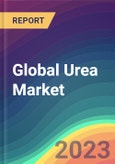Quick Summary:
Embark on a deep dive into the evolving landscapes of the global Urea market, paving ways to strategic, data-driven decisions and ensuring your business stays ahead of the curve. Urea, a crucial compound extensively used in fertilizers, along with a spectrum of industries including chemical, pharmaceutical, and automotive, has witnessed significant growth over the years. This comprehensive report unlocks new insights into its global market demand dynamics and growth trajectory.
Driven primarily by the burgeoning demands from the agriculture sector, among other industries, the growth of the Urea market is a promising phenomenon. A key player in this landscape is Asia Pacific, attributed to a high consumption rate and growing industries. Additionally, evolving end-use segments, particularly urea formaldehyde resin production, are set to further increase the demand for Urea in the future. Encompassing all these crucial aspects and more, this report is a vital tool for informed, strategic business planning.
The global Urea market has grown significantly in the past years to reach approximately 180 million tonnes in 2022 and is expected to grow at a steady CAGR of 4.10% during the forecast period until 2032.The Global Urea Market Has Grown Significantly in the Past Years to Reach Approximately 180 Million Tonnes in 2022 and is Expected to Grow at a Steady CAGR of 4.10% During the Forecast Period Until 2032
Urea, also known as carbamide, is a nitrogenous compound with the molecular formula CO(NH2)2. It contains a carbonyl group attached to two amine groups with osmotic diuretic activity. Urea is neither acidic nor alkaline and is colorless, odorless, non-toxic, and highly soluble in water. It is generally made from synthetic Ammonia and Carbon Dioxide (CO2). As a large amount of CO2 is produced during the Ammonia manufacturing process as a byproduct from hydrocarbons (natural gas or petroleum derivatives) or from coal, urea production plants are almost always located adjacent to the Ammonia manufacturing sites.
Urea finds its extensive usage in fertilizers as a source of nitrogen and is an important raw material for the chemical industry and several other products. The consistently increasing demand for fertilizers from the agriculture industry is driving the demand for Urea, which is further propelling its market around the globe. Apart from agriculture, Urea is utilized in an array of applications, including plastics, resins, adhesives, explosives, automobile systems, drugs, and other commercial products. The global Urea market is anticipated to reach 270 million tonnes by 2032.
Based on region-wise consumption, Asia Pacific dominates the Urea market, followed by North America. In 2022, Asia Pacific held a consumption of approximately 45% of the market in FY2022. Increasing consumption of Nitrogen fertilizers in countries including China and India is driving the demand for Urea across the Asia Pacific region. China is one of the leading producers of Urea-Formaldehyde resin in the world, which will most likely increase the urea demand in the region. The demand from automotive, chemical, medical, and other downstream industries is also rising at an exponential pace across the region.
Based on the end-use, the global Urea market is segregated into Fertilizers, Urea Formaldehyde Resin, NOX Control, Melamine, and Others. As of FY2022, Fertilizers industry is leading segment among these industries and consumed approximately 80% of the market. Both as a fertilizer and an ingredient in animal feed, urea is widely utilized in agriculture sector. The main purpose of urea fertilizers in agriculture is to supply nitrogen to plants, which encourages the growth of green and leafy plants. It is required for plants to engage in photosynthesis. Moreover, Urea Formaldehyde Resin is another impressive application of Urea.
Major players in the production of Global Urea are CF Industries, Inc, Algeria Oman Fertilizer Company, Acron Group, Abu Qir Fertilizers and Chemical Industries Co. (AFC), Asean Bintulu Fertilizer SDN BHD, Ammoni JSC, Alexandria Fertilizers Co. (AlexFert), Agrium Inc., BASF SE, Chittagong Urea Fertilizer Ltd. (CUFL), Jamuna Fertilizer Company Ltd (JFCL), Ashuganj Fertilizerand Chemical Company Ltd (AFCCL), and Others.
Years considered for this report:
- Historical Period: 2015- 2022
- Base Year: 2022
- Estimated Year: 2023
- Forecast Period: 2024-2032
Objective of the Study:
- To assess the demand-supply scenario of Urea which covers production, demand and supply of Urea market in the globe.
- To analyse and forecast the market size of Urea
- To classify and forecast Global Urea market based on end-use and regional distribution.
- To examine competitive developments such as expansions, mergers & acquisitions, etc., of Urea market in the globe.
The publisher calculated Urea demand in the globe by analyzing the historical data and demand forecast which was carried out considering the historical supply and demand of Urea across the globe. The publisher sourced these values from industry experts, and company representatives and externally validated through analyzing historical sales data of respective manufacturers to arrive at the overall market size. Various secondary sources such as company websites, association reports, annual reports, etc., were also studied by the publisher.
Key Target Audience:
- Urea manufacturers and other stakeholders
- Organizations, forums and alliances related to Urea distribution
- Government bodies such as regulating authorities and policy makers
- Market research organizations and consulting companies
Report Scope:
In this report, Global Urea market has been segmented into following categories, in addition to the industry trends which have also been detailed below:- Market, by End-use: Fertilizers, Urea Formaldehyde Resin, NOX Control, Melamine, and Others
- Market, by Sales Channel: Direct Sale and Indirect Sale
- Market, by Region: North America, Europe, Asia Pacific, Middle East and Africa, and South America.
Available Customizations:
With the given market data, the publisher offers customizations according to a company’s specific needs.Table of Contents
Methodology

LOADING...








